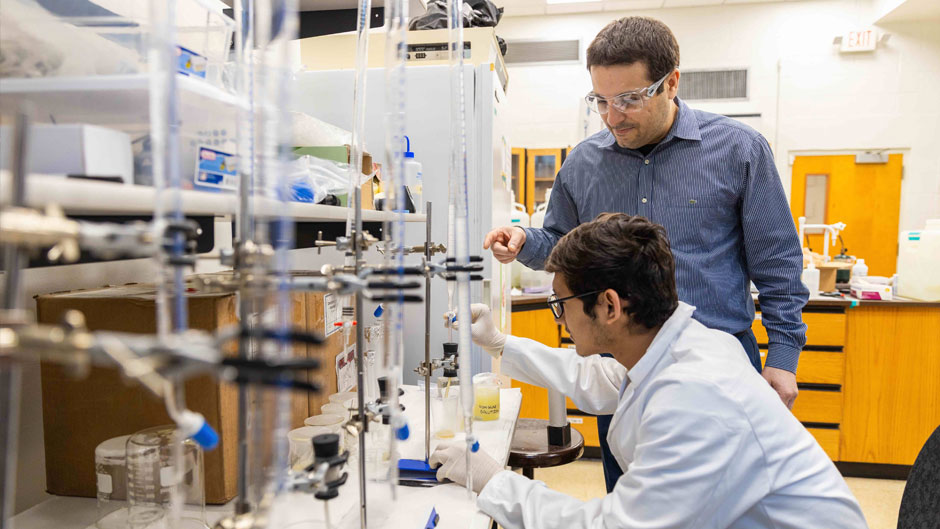The Romans used it to build the mighty Pantheon nearly two millennia ago—its colossal dome still one of the world’s greatest architectural wonders.
Engineers used it to make the more than 9,500 pillars that support the 24-mile-long Lake Pontchartrain Causeway, the longest bridge in the United States.
And more than four million cubic yards of the stuff was used to build the Hoover Dam, enough to pave a strip 16 feet wide and 8 inches thick from San Francisco to New York City.
From bridges and barricades to homes and high-rise buildings, concrete is the most widely used construction material in the world. But sometimes it develops cracks that can compromise its structural integrity and necessitate costly repairs.
Now, a University of Miami structural engineer, borrowing a page from the body’s ability to mend on its own, has developed concrete that heals itself.
“It’s a project inspired by nature,” said Ali Ghahremaninezhad, an associate professor in the College of Engineering’s Department of Civil and Architectural Engineering. “We know that certain microorganisms can produce binding agents through a process called biomineralization,” he explained. “So, we embed these microorganisms in concrete during the mixing process.”
Those microorganisms remain dormant so long as the concrete isn’t breached. But when it is damaged, the microorganisms react, producing what Ghahremaninezhad calls glue-like agents that fill in the cracks and heal the concrete from the inside.
A host of environmental factors can cause concrete to degrade. “In the coastal regions of Florida, saltwater is the primary culprit of concrete corrosion,” Ghahremaninezhad noted.
His “Bio-Inspired Genetically Engineered Self-Healing for Cementitious Materials” research, which has received National Science Foundation funding, has the potential to prolong the structural strength and life of concrete.
In early lab tests, samples of the self-healing concrete performed well, undergoing the biomineralization process after cracks were created. But more testing is needed, Ghahremaninezhad said. “This is new technology, and it needs more robust testing and development,” he explained. “For example, we need to determine whether the microorganisms that are incorporated into the concrete affect other durability properties of the material. And we need to look at long-term performance.”
If the process is perfected, it would not only reduce the need for costly infrastructure repairs and replacements but also help cut greenhouse gas emissions. Portland cement, the key ingredient in concrete, is the source of approximately 8 percent of the world’s carbon dioxide emissions, according to a 2018 report by the London-based think tank Chatham House.
“The production of concrete is a very polluting process,” Ghahremaninezhad said. “Self-healing concrete would help curtail the amount of cement that is produced and that would have dramatic benefits to the environment.”

